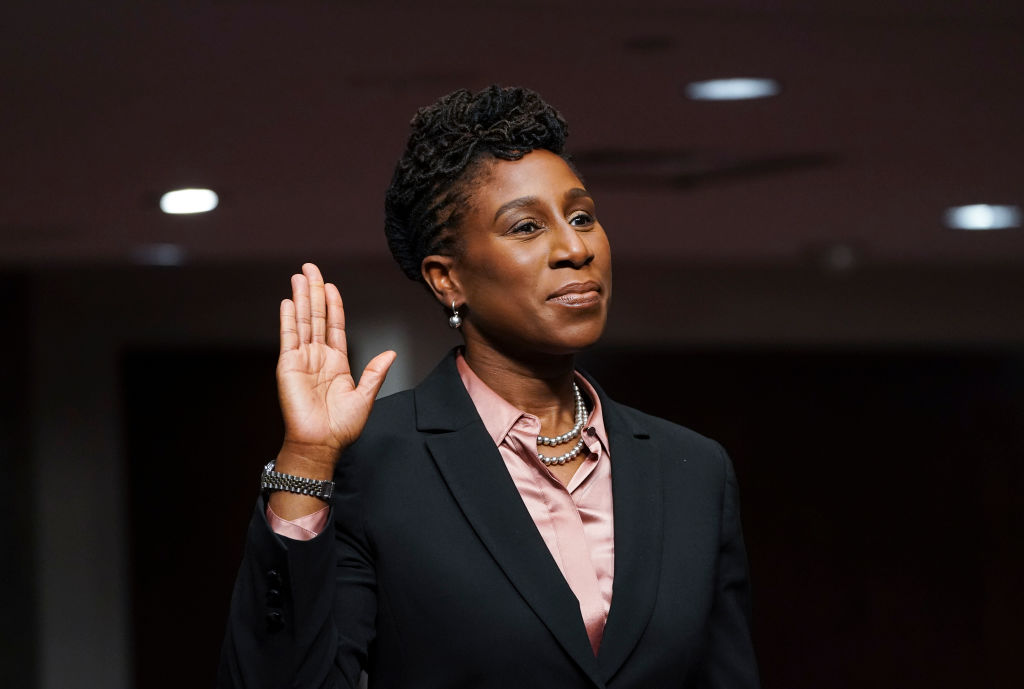The president’s success in diversifying our federal courts has gone underreported this year. It is our collective responsibility to champion this progress and to call for its continuation.

At the end of the Trump administration, the judges sitting on the federal bench were nearly 74 percent white and 67 percent men. Needless to say, these numbers did not reflect the diversity of the public that our federal judiciary serves. This lack of representation undermines trust in our judiciary as people whose lives are impacted by the courts do not see themselves reflected by the people sitting on the bench.
Our federal judiciary should reflect the diversity of the public it serves.
We need diversity on the bench for the same reasons we need greater diversity in Congress and federal agencies. Our institutions benefit from a diversity of viewpoints and backgrounds, and an ability to understand the challenges and experiences of the people whose lives are directly impacted by these institutions every day.
Take for instance the pressing reality that the short-term fate of reproductive rights in this country rests with the federal judiciary. An institution that is overwhelmingly male will decide whether to revoke our constitutional right to abortion access.
The same analysis can be done for voting rights. State laws that disproportionately suppress the voting rights of people of color are being reviewed by a judiciary that is overwhelmingly white. These dynamics undermine the credibility of the judiciary, to our collective detriment.
President Biden’s first year was a case study in prioritizing diversity.
Federal judges are nominated by the president and confirmed by the U.S. Senate. This means the only way to diversify the federal bench is for the president and the Senate to prioritize diversity in the candidates they nominate and confirm. In his first year, President Biden has demonstrated an unprecedented commitment to nominating diverse, qualified candidates for the federal bench.
The Biden-Harris administration nominated 73 and the Senate confirmed 42 federal court judges in 2021, including two Court of Federal Claims judges. This represents the most confirmed judges in a single year by any president since the Reagan administration. The total number, however, does not tell the full picture of just how historic this year was for the federal judiciary.
A majority of the federal judges confirmed were majority women and majority people of color. This is what a commitment to diversifying the federal courts looks like.
Thus far, 80 percent of President Biden’s confirmed judges have been women. In contrast, only 42 percent of President Obama’s federal judges were women, and a mere 24 percent of President Trump’s were women. This is an imperfect contrast, as these numbers reflect one year of the Biden-Harris administration, versus eight for Obama and four for Trump. Nonetheless, the contrast is informative.
One year is not enough. We need to see a sustained commitment.
It will take a sustained commitment to diversity to actually achieve a federal judiciary that reflects the American people. Even with President Biden’s diverse judges confirmed this year, the federal judiciary is still approximately 72 percent white and 65 percent men. The numbers are moving in the right direction, but we have a long way to go.
The impact that a president has on the federal judiciary can be one of their most enduring legacies, as most federal judges have life tenure. The impact that a president’s federal judges have on our laws and legal systems endures usually for decades after the president has stepped down from office. However, a president must have a Senate willing to confirm judges in order to achieve this impact.
Given the uncertainty about what will happen with the 2022 mid-terms, it is imperative that President Biden and Senate Majority Leader Schumer sustain their commitment to nominating and confirming diverse judges. This is why it is also important for the public to herald their progress this past year. The president’s success in diversifying our federal courts has gone underreported this year. It is our collective responsibility to champion this progress and to call for its continuation.
We all benefit from a federal judiciary that reflects us and our racial, ethnic, gender, LGBTQ+ and professional diversity.
Up next:





